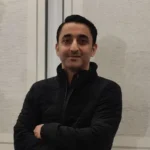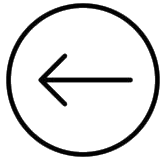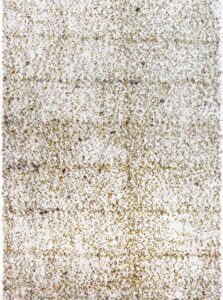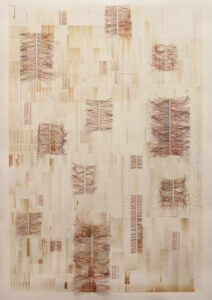Ankush Safaya was born in 1985 in Hoshiarpur, Punjab. Trained as an engineer he completed his studies in 2007, and went on to work at Samsung. Through all those years he carried the need to be an artist while attempting to conform to the desires of his parent’s dreams. Five years after being in a lucrative job, overnight unbeknown to anyone in his family, he walked out to completely immerse himself in the practice of art.
Having forfeited the chance of formal training at an art school earlier in life proved that the methods of learning had to be different. He initially worked as a technical studio assistant to Veer Munshi, an artist in Delhi. In 2014, Safaya met Rekha Rodwittiya and decided to move to Baroda to be part of The Collective Studio Baroda hosted by her and Surendran Nair.
He debuted with his first solo Anantata – Hymns of Graphical Notation at Sakshi Gallery in 2019 and another A Room Of One’s Own in 2023. He has been previously part of group exhibitions such as ‘Ufuq- Zarina a tribute’ at Kamalnayan Bajaj Gallery, Mumbai, curated by Dr Arshiya Lokhandwala, presented by Sunaina Kejriwal, ‘Four Conversations in the Room’ at Sakshi Salon, Mumbai, curated by Rekha Rodwittiya; ‘The Sacred And The Profane’ at Sakshi Gallery, Mumbai, ‘Five for the future’ at Nature Morte, Gurgaon. He was awarded the Glenfiddich Emerging Artist of the Year 2013 (runner-up). He presented at the Tie Conference 2019 at Santa Clara, California, on the invitation of the Motwani Jadeja Foundation, and also gave a masterclass to the fellows of the Rajeev Circle Program. He participated in the first Artist-in-residence program by the Motwani Jadeja Foundation in New York in August 2019. He has been presented by Sakshi gallery in 2010, 2022 and 2023 at three Indian art fairs.
His work is based on form and structure as the major components that deliver his pictorial content. His interest finally lies in how formal elements arrange themselves and meanings arise through the personal interplay of individual experiences decoding the works. The triggers to his visual articulations often include musical pieces of composers like Arvo Part and John Cage, the visuals of filmmakers Andrei Tarkovsky and Akira Kurosawa, along with the metaphysical oeuvre of the artist Nasreen Mohammedi. Each becomes a mental sounding board, with the unique potential to create infinite echoes that have inexplicable transmutations.
Safaya continues to reside and work at The Collective Studio, Baroda.
Having forfeited the chance of formal training at an art school earlier in life proved that the methods of learning had to be different. He initially worked as a technical studio assistant to Veer Munshi, an artist in Delhi. In 2014, Safaya met Rekha Rodwittiya and decided to move to Baroda to be part of The Collective Studio Baroda hosted by her and Surendran Nair.
He debuted with his first solo Anantata – Hymns of Graphical Notation at Sakshi Gallery in 2019 and another A Room Of One’s Own in 2023. He has been previously part of group exhibitions such as ‘Ufuq- Zarina a tribute’ at Kamalnayan Bajaj Gallery, Mumbai, curated by Dr Arshiya Lokhandwala, presented by Sunaina Kejriwal, ‘Four Conversations in the Room’ at Sakshi Salon, Mumbai, curated by Rekha Rodwittiya; ‘The Sacred And The Profane’ at Sakshi Gallery, Mumbai, ‘Five for the future’ at Nature Morte, Gurgaon. He was awarded the Glenfiddich Emerging Artist of the Year 2013 (runner-up). He presented at the Tie Conference 2019 at Santa Clara, California, on the invitation of the Motwani Jadeja Foundation, and also gave a masterclass to the fellows of the Rajeev Circle Program. He participated in the first Artist-in-residence program by the Motwani Jadeja Foundation in New York in August 2019. He has been presented by Sakshi gallery in 2010, 2022 and 2023 at three Indian art fairs.
His work is based on form and structure as the major components that deliver his pictorial content. His interest finally lies in how formal elements arrange themselves and meanings arise through the personal interplay of individual experiences decoding the works. The triggers to his visual articulations often include musical pieces of composers like Arvo Part and John Cage, the visuals of filmmakers Andrei Tarkovsky and Akira Kurosawa, along with the metaphysical oeuvre of the artist Nasreen Mohammedi. Each becomes a mental sounding board, with the unique potential to create infinite echoes that have inexplicable transmutations.
Safaya continues to reside and work at The Collective Studio, Baroda.

Shows
 Back
Back






